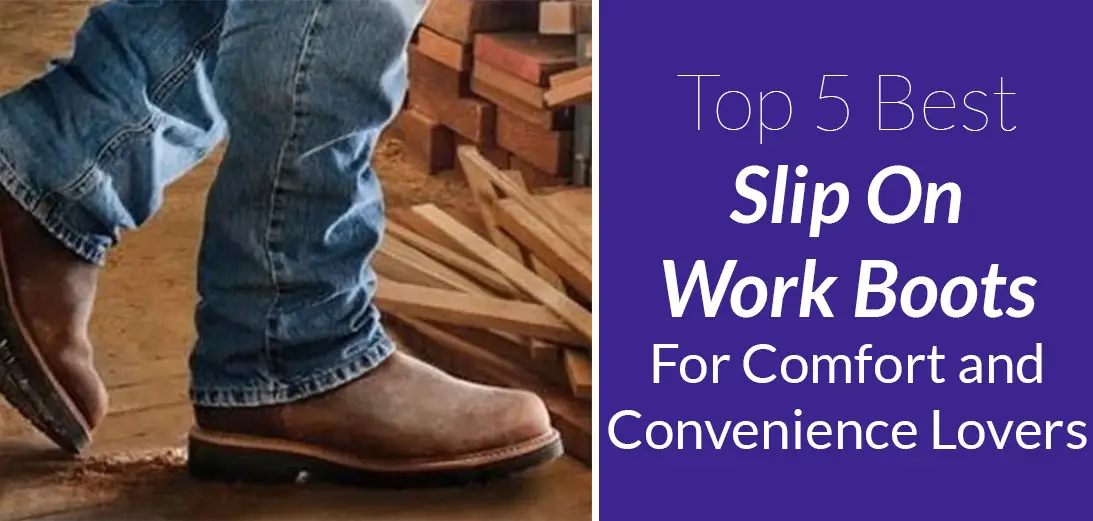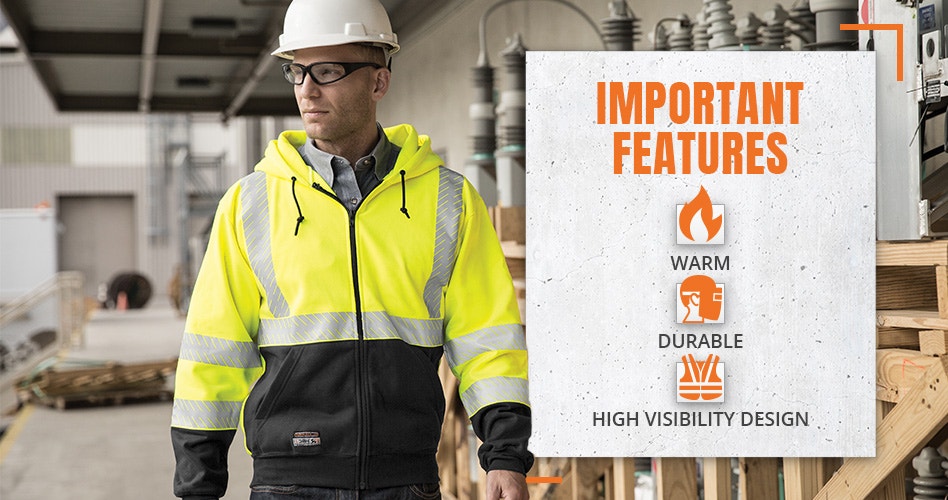
A slip-on work boot is a type of footwear designed to provide protection and comfort in various work environments. It features a convenient slip-on design, eliminating the need for laces or buckles, making it easy to put on and take off.
Slip-on work boots are highly valued for their convenience, durability, and safety features. They are often constructed with slip-resistant outsoles, puncture-resistant midsoles, and reinforced toes to protect the wearer from potential hazards. Additionally, they may incorporate moisture-wicking materials to keep feet dry and comfortable throughout the workday.
Slip-on work boots have gained popularity in various industries, including construction, manufacturing, warehousing, and transportation. They offer a practical and comfortable footwear solution for individuals seeking a combination of protection and ease of use in their work environments.
1. Slip-On Convenience
The slip-on convenience of slip-on work boots is a significant advantage in various work environments. The easy on-and-off design eliminates the need for laces or buckles, saving valuable time and effort throughout the workday. This convenience is particularly beneficial in fast-paced or demanding work settings where time is crucial.
For instance, in construction sites, workers often need to quickly put on and take off their boots when moving between different work areas or tasks. Slip-on work boots allow them to do so swiftly and efficiently, minimizing downtime and maximizing productivity. Similarly, in manufacturing or warehousing environments, workers handling heavy equipment or goods may need to frequently remove their boots for safety reasons. Slip-on work boots provide a convenient solution, allowing them to take off and put on their boots quickly and easily.
The slip-on convenience of slip-on work boots not only saves time but also reduces fatigue and strain on the feet and legs. By eliminating the need for constant bending or tying, workers can conserve their energy and focus on their tasks. This is particularly important for those working long hours or in physically demanding jobs.
In summary, the slip-on convenience of slip-on work boots plays a vital role in enhancing productivity, reducing fatigue, and ensuring safety in various work environments. Its easy on-and-off design is a key feature that contributes to the overall value and practicality of slip-on work boots.
2. Protective Features
Slip-on work boots prioritize safety in various work environments through their robust protective features. These features are designed to safeguard wearers from potential hazards and injuries.
-
Reinforcements:
Reinforcements in slip-on work boots provide additional strength and durability to critical areas, such as the toe and heel. These reinforcements help protect the feet from impact, compression, and punctures. In construction sites or manufacturing facilities, where heavy objects or machinery are present, reinforced work boots offer peace of mind, knowing that the feet are well-protected.
-
Slip-resistant soles:
Slip-resistant soles are crucial for preventing slips and falls, which are common hazards in many workplaces. Slip-on work boots with slip-resistant soles provide excellent traction on various surfaces, including wet, oily, or uneven floors. This feature is particularly important in industries such as hospitality, healthcare, and retail, where spills or slippery surfaces are common.
-
Puncture-resistant midsoles:
Puncture-resistant midsoles serve as a protective barrier against sharp objects that may penetrate the sole of the boot. They are commonly found in work boots designed for construction, roofing, or landscaping, where workers may encounter sharp materials or debris. Puncture-resistant midsoles help prevent injuries and ensure that workers can perform their duties with confidence.
Collectively, these protective features make slip-on work boots an essential piece of safety gear in various industries. They provide comprehensive protection, giving workers the assurance they need to perform their jobs safely and efficiently.
3. Comfort and Support
Comfort and support are essential aspects of slip-on work boots, contributing significantly to the overall well-being and productivity of workers. Slip-on work boots are designed with various features to ensure that feet remain comfortable and supported throughout the workday.
-
Ergonomic designs:
Ergonomic designs prioritize the natural shape and movement of the foot. They provide arch support, cushioning, and a wide toe box to reduce fatigue and discomfort. Prolonged standing or walking in traditional work boots can lead to foot pain, but ergonomic designs help alleviate these issues.
-
Cushioning:
Cushioning in slip-on work boots absorbs shock and provides a comfortable base for the feet. It is especially important for workers who spend long hours on their feet or work on hard surfaces. Proper cushioning reduces stress on the feet, legs, and back, promoting overall comfort and well-being.
-
Moisture-wicking materials:
Moisture-wicking materials draw sweat away from the feet, keeping them dry and comfortable. In warm or humid environments, moisture buildup can lead to discomfort and blisters. Moisture-wicking materials help regulate foot temperature, preventing excessive sweating and ensuring a more comfortable work experience.
These comfort and support features are crucial for workers who need to stand or walk for extended periods or work in challenging environments. Slip-on work boots provide a combination of protection, functionality, and comfort, making them a valuable asset for various industries.
4. Durability
Durability is a crucial aspect of slip-on work boots, ensuring that they can withstand the rigors of various work environments and provide long-lasting protection and comfort. Slip-on work boots are constructed using sturdy materials and reinforced construction techniques to enhance their durability and extend their lifespan.
-
Sturdy Materials:
Slip-on work boots are often made from high-quality leather, synthetic materials, or a combination of both. These materials are chosen for their durability, resistance to wear and tear, and ability to withstand harsh conditions. Sturdy materials ensure that slip-on work boots can endure daily use and protect the feet from potential hazards.
-
Reinforced Construction:
In addition to sturdy materials, slip-on work boots incorporate reinforced construction techniques to enhance their durability. Reinforcements are added to critical areas, such as the toe, heel, and ankle, to provide additional support and protection. This reinforced construction helps prevent premature wear and tear, extending the lifespan of the boots and ensuring they can withstand demanding work conditions.
-
Resistance to Wear and Tear:
Sturdy materials and reinforced construction contribute to the overall resistance of slip-on work boots to wear and tear. This resistance ensures that the boots can withstand daily use, exposure to harsh elements, and accidental impacts. By resisting wear and tear, slip-on work boots maintain their structural integrity and protective capabilities for an extended period.
-
Extended Lifespan:
The combination of sturdy materials and reinforced construction results in an extended lifespan for slip-on work boots. Durable construction ensures that the boots can withstand the rigors of daily use and maintain their protective qualities over time. This extended lifespan reduces the need for frequent replacements, saving costs and providing a long-term investment in safety and comfort.
In conclusion, the durability of slip-on work boots, achieved through sturdy materials and reinforced construction, is essential for ensuring long-lasting protection and comfort in demanding work environments. By resisting wear and tear and providing an extended lifespan, durable slip-on work boots offer a reliable and cost-effective solution for workers seeking reliable footwear.
5. Versatility
The versatility of slip-on work boots lies in their adaptability to a wide range of industries and work environments. Their unique combination of protection, comfort, and convenience makes them suitable for various sectors, including construction, manufacturing, and transportation.
In the construction industry, slip-on work boots offer protection from potential hazards such as falling objects, sharp materials, and electrical hazards. Their slip-resistant soles and reinforced construction ensure stability and safety on construction sites. Similarly, in manufacturing environments, slip-on work boots provide protection from chemical spills, heavy machinery, and slippery floors. Their durability and comfort are essential for workers who spend long hours standing or walking on hard surfaces.
The transportation industry also benefits from the versatility of slip-on work boots. Transportation workers, including truck drivers, warehouse personnel, and airline staff, require footwear that provides comfort, support, and protection during their daily tasks. Slip-on work boots meet these requirements, ensuring the safety and well-being of workers in various transportation settings.
The versatility of slip-on work boots stems from their ability to adapt to diverse work environments and provide a combination of protection, comfort, and convenience. Their suitability for various industries highlights their practical value and makes them an essential part of personal protective equipment for workers across multiple sectors.
6. Compliance
Compliance with industry safety standards and regulations plays a crucial role in the design and production of slip-on work boots. By adhering to these standards, manufacturers ensure that their products meet the minimum safety requirements for specific work environments.
For instance, slip-on work boots intended for use in construction must comply with standards set by organizations such as the American National Standards Institute (ANSI) and the Occupational Safety and Health Administration (OSHA). These standards specify requirements for protective features such as impact resistance, puncture resistance, and slip resistance. By meeting these standards, manufacturers demonstrate that their slip-on work boots provide adequate protection against potential hazards in construction environments.
Compliance with safety standards is not only a legal requirement but also a moral obligation for manufacturers. By producing compliant slip-on work boots, they contribute to the overall safety and well-being of workers in various industries. Compliant work boots help reduce the risk of workplace injuries, ensuring that workers can perform their jobs confidently and efficiently.
Understanding the connection between compliance and slip-on work boots is essential for employers and workers alike. Employers must ensure that the slip-on work boots they provide to their employees meet the relevant safety standards. Workers, on the other hand, should be aware of the importance of wearing compliant work boots to protect themselves from potential hazards.
In conclusion, compliance with industry safety standards and regulations is a vital aspect of slip-on work boots. By meeting these standards, manufacturers ensure that their products provide adequate protection and contribute to the safety of workers in various industries.
Frequently Asked Questions about Slip-On Work Boots
This comprehensive FAQ section addresses common questions and misconceptions surrounding slip-on work boots, providing clear and informative answers.
Question 1: What are the advantages of slip-on work boots?
Slip-on work boots offer several advantages, including convenience, ease of use, and time-saving. Their slip-on design eliminates the need for laces or buckles, allowing for quick and effortless on-and-off transitions.
Question 2: Are slip-on work boots safe?
Yes, slip-on work boots can be just as safe as traditional lace-up work boots. They are designed to meet industry safety standards and regulations, featuring protective elements such as reinforced toes, slip-resistant soles, and puncture-resistant midsoles.
Question 3: Are slip-on work boots suitable for all work environments?
Slip-on work boots are versatile and suitable for various work environments, including construction, manufacturing, transportation, and hospitality. They provide a combination of protection, comfort, and convenience, making them a practical choice for many industries.
Question 4: How to ensure a proper fit for slip-on work boots?
To ensure a proper fit, it is recommended to try on different sizes and styles of slip-on work boots. Look for a snug fit that provides adequate support and comfort without causing any discomfort or blisters.
Question 5: How to maintain slip-on work boots?
Regular maintenance is essential to extend the lifespan of slip-on work boots. Clean them regularly with a damp cloth and use leather conditioner to keep the material supple. Avoid exposing them to excessive heat or moisture.
Question 6: When to replace slip-on work boots?
Replace slip-on work boots when they show signs of wear and tear, such as worn-out soles, damaged uppers, or reduced protective capabilities. It is crucial to ensure that the boots continue to provide adequate protection and support.
In conclusion, slip-on work boots offer a unique combination of convenience, safety, and versatility. Understanding their advantages and how to choose, maintain, and replace them is essential for making informed decisions and ensuring the well-being of workers in various industries.
Transitioning to the next article section…
Slip-On Work Boot Tips
Slip-on work boots provide convenience, protection, and comfort in various work environments. Here are some tips to help you get the most out of your slip-on work boots:
Tip 1: Choose the Right Fit
Properly fitting slip-on work boots are essential for comfort and safety. Ensure the boots fit snugly without causing discomfort or blisters. If the boots are too loose, they may not provide adequate support and protection. Conversely, overly tight boots can restrict blood flow and cause foot pain.
Tip 2: Consider the Work Environment
Different work environments have specific safety requirements. Assess the potential hazards in your workplace and choose slip-on work boots that provide appropriate protection. For example, if working in a construction environment, opt for boots with reinforced toes and slip-resistant soles. In electrical environments, look for boots with electrical hazard protection.
Tip 3: Maintain Regularly
Regular maintenance extends the lifespan of slip-on work boots. Clean them regularly with a damp cloth to remove dirt and debris. Use leather conditioner to keep the material supple and prevent cracking. Avoid exposing the boots to excessive heat or moisture, as this can damage the materials.
Tip 4: Replace When Necessary
Slip-on work boots should be replaced when they show signs of wear and tear. Worn-out soles, damaged uppers, or reduced protective capabilities indicate that it’s time for a new pair. Continuing to use damaged boots can compromise your safety and comfort.
Tip 5: Choose Comfort Features
Slip-on work boots with comfort features enhance your workday experience. Look for boots with ergonomic designs, cushioning, and moisture-wicking materials. These features provide support, reduce fatigue, and keep your feet comfortable throughout the day.
Tip 6: Consider Safety Certifications
When selecting slip-on work boots, check for safety certifications. Certifications from organizations like ANSI or OSHA indicate that the boots meet specific safety standards. These standards ensure that the boots provide adequate protection against potential hazards, giving you peace of mind in your work environment.
By following these tips, you can optimize the performance, longevity, and safety of your slip-on work boots. Remember, proper footwear is an investment in your well-being and productivity.
In the following section, we will delve into the conclusion of the article…
Conclusion
This comprehensive exploration of slip-on work boots has shed light on their significance in various work environments. Slip-on work boots offer a unique blend of convenience, protection, and comfort, making them an essential piece of personal protective equipment for workers across multiple industries.
Their slip-on design provides unmatched ease of use, saving valuable time and effort during busy workdays. At the same time, they prioritize safety through protective features such as reinforced toes, slip-resistant soles, and puncture-resistant midsoles, safeguarding workers from potential hazards.
Beyond safety, slip-on work boots are engineered for comfort and support. Ergonomic designs, cushioning, and moisture-wicking materials work together to reduce fatigue and keep feet comfortable throughout extended periods of wear. Their durability ensures long-lasting performance, reducing the need for frequent replacements and providing a cost-effective solution.
In conclusion, slip-on work boots are a crucial investment in workplace safety and productivity. Their unique combination of features makes them an indispensable choice for workers seeking reliable and comfortable footwear that meets the demands of their work environments. By choosing the right slip-on work boots and maintaining them properly, workers can enhance their safety, comfort, and productivity.



